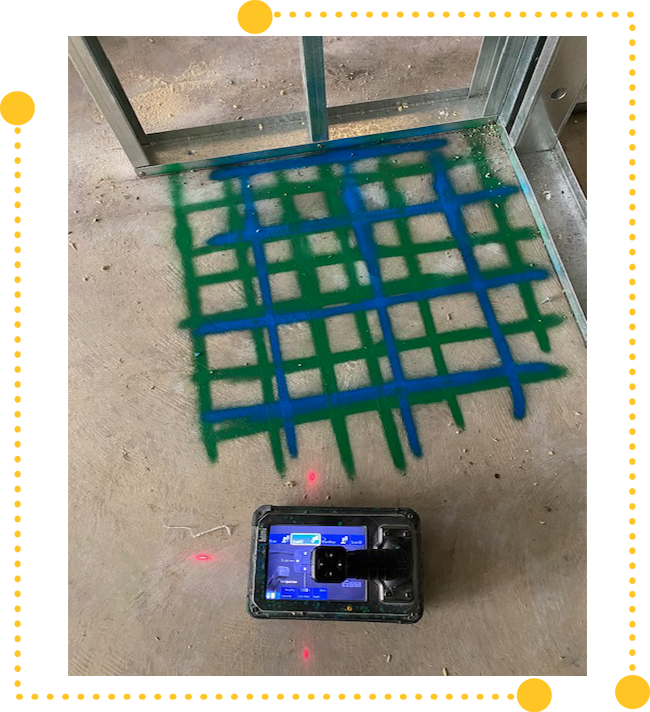Enhancing Job Planning and Execution With Advanced Concrete Scanning Strategies
In the realm of job preparation and insight, execution and accuracy are essential components that can make the distinction between success and obstacles. Advanced concrete scanning techniques have actually become an advanced tool readied to boost the requirements of job management within the construction sector. By taking advantage of sophisticated technology, these methods supply a glance right into the architectural honesty of a building even before the initial brick is laid. The implications of such improvements are extensive, promising a standard shift in how tasks are come close to and provided.
Benefits of Advanced Concrete Scanning Methods

Improved Precision in Project Assessments
Enhancing job evaluations via advanced concrete scanning techniques substantially enhances the precision and dependability of building examinations. By employing advanced scanning innovations such as ground-penetrating radar (GPR) and 3D imaging, project groups can currently acquire in-depth understandings into the problem of concrete frameworks, recognizing possible imperfections or weak points that may not be noticeable to the nude eye. This boosted level of accuracy in project assessments enables construction experts to make even more informed decisions concerning fixing and maintenance approaches, bring about enhanced general project end results.
Additionally, the raised accuracy in task analyses attained via sophisticated concrete scanning techniques aids in decreasing the threat of unpredicted problems during the construction stage. By proactively detecting concealed anomalies within concrete structures, such as rebar corrosion or gaps, project teams can deal with these issues early, preventing expensive hold-ups and rework later on in the project lifecycle. Eventually, the improved accuracy in task evaluations assisted in by advanced concrete scanning methods contributes to greater effectiveness, cost-effectiveness, and quality in building and construction jobs.
Very Early Identification of Structural Obstacles
Early discovery of structural obstacles plays a vital duty in making sure the stability and security of concrete frameworks throughout the construction procedure. Determining potential issues at an onset permits timely treatment, protecting against pricey rework, schedule hold-ups, and safety dangers. Advanced concrete scanning strategies, such as ground-penetrating radar (GPR) and 3D imaging, enable job groups to uncover hidden problems, voids, reinforcement layout inconsistencies, and various other anomalies that might jeopardize the framework's stability.
By carrying out these strategies throughout the preparation and implementation phases, building and construction specialists can proactively attend to structural difficulties prior to they intensify into significant issues. As an example, finding poor concrete cover over support bars early on can stop corrosion and architectural weakening in the long run - RainierGPR Service Areas. Moreover, identifying variations in concrete density or thickness can aid enhance product usage and guarantee uniform strength residential or commercial properties throughout the structure

Ultimately, very early identification of architectural difficulties via sophisticated concrete scanning not just improves the overall quality and durability of the building however also adds to a safer constructed setting for owners and customers.
Enhanced Precaution in Building
The implementation of robust safety and security procedures is imperative in the construction right here industry to mitigate risks and secure the health of workers and stakeholders. To improve security measures, building and construction companies are increasingly taking on technological advancements such as wearable tools that check employees' vital signs and find possible wellness concerns in real-time. By prioritizing safety with the incorporation of sophisticated technologies and comprehensive training programs, building and construction projects can substantially decrease crashes and produce a safe and secure functioning environment for all entailed.
Streamlining Job Monitoring Processes
To optimize functional performance and ensure task success in the building industry, a focus on streamlining project monitoring processes is essential. By implementing efficient job monitoring procedures, construction jobs can minimize delays, reduce expenses, and improve total efficiency. One vital element of simplifying job management is the usage of advanced innovations such as Structure Details Modeling (BIM) software application, which allows real-time cooperation, clash discovery, and accurate job scheduling. In addition, the fostering of cloud-based job you can find out more monitoring platforms permits seamless communication amongst group participants, instant access to job information, and the ability to track progression in real-time.

Final Thought
Finally, the application of advanced concrete scanning wikipedia reference techniques provides various benefits for job planning and implementation. These strategies give better precision in task analyses, very early recognition of structural difficulties, boosted precaution in building and construction, and structured job monitoring processes. Integrating these techniques into job process can ultimately lead to much more efficient and successful outcomes in construction tasks.
Inevitably, the improved precision in task evaluations assisted in by sophisticated concrete scanning techniques contributes to better effectiveness, cost-effectiveness, and high quality in building projects. RainierGPR Service Areas.
To maximize functional efficiency and ensure task success in the building industry, a focus on enhancing job management procedures is necessary. By executing effective task monitoring procedures, construction tasks can lessen delays, lower costs, and boost general productivity. By simplifying project monitoring processes via innovation assimilation, clear communication, and data-driven methods, construction tasks can accomplish better efficiency, cost-effectiveness, and effective outcomes.
These methods provide enhanced precision in job analyses, early recognition of structural obstacles, enhanced safety procedures in construction, and structured task management procedures.